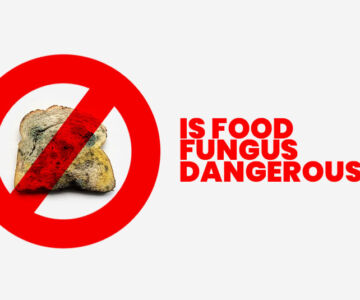 How Much Sugar Should You Eat in a Day?by admin / April 21, 2025
How Much Sugar Should You Eat in a Day?by admin / April 21, 2025What to Know About Malnutrition: Causes, Symptoms, and Solutions
Malnutrition is a widespread yet often overlooked health issue that affects people of all ages across the globe. It occurs when the body does not get the right balance of nutrients to function properly. This can include both undernutrition (not getting enough nutrients) and overnutrition (getting too many nutrients), though the term is most commonly associated with undernutrition.
Understanding malnutrition—its causes, symptoms, risk factors, and treatments—is essential for early detection and prevention. In this article, we’ll explore everything you need to know about malnutrition.
What Is Malnutrition?
Malnutrition refers to a condition that results from an unbalanced diet, where a person either receives too few or too many nutrients. While it’s commonly linked with starvation and poverty, malnutrition can also occur in people who consume enough calories but lack essential vitamins and minerals.
There are two main types of malnutrition:
-
Undernutrition: This includes wasting (low weight-for-height), stunting (low height-for-age), underweight (low weight-for-age), and micronutrient deficiencies (lack of important vitamins and minerals).
-
Overnutrition: This refers to consuming more nutrients, especially calories, than the body needs, often leading to overweight and obesity.
Both types can lead to serious health problems if not addressed in time.
Causes of Malnutrition
Malnutrition doesn’t happen overnight. It usually results from a combination of factors, including:
1. Poor Diet
A diet lacking in key nutrients like protein, iron, zinc, and vitamins can quickly lead to malnutrition, especially in children and elderly individuals.
2. Chronic Illnesses
Certain medical conditions, such as cancer, diabetes, and gastrointestinal disorders (like Crohn’s disease), interfere with the body’s ability to digest or absorb nutrients.
3. Mental Health Issues
Depression, dementia, and eating disorders like anorexia or bulimia can all contribute to reduced appetite and poor nutrition.
4. Lack of Access to Food
In low-income regions, food insecurity remains a leading cause of malnutrition, especially in children.
5. Alcohol or Drug Dependence
Substance abuse can suppress appetite and interfere with nutrient absorption.
6. Elderly Factors
Older adults may have difficulty chewing, swallowing, or shopping for and preparing meals, which increases their risk.
Symptoms of Malnutrition
The symptoms of malnutrition can vary depending on the severity and type of nutritional deficiency. According to the NHS, common signs include:
In Adults:
-
Unintentional weight loss
-
Fatigue or low energy levels
-
Weakness and muscle loss
-
Reduced appetite
-
Dry, flaky skin or brittle hair
-
Swollen or bleeding gums
-
Increased risk of infections or illnesses
-
Slow wound healing
In Children:
-
Stunted growth (shorter than average for their age)
-
Delayed development in speaking, motor skills, or social interaction
-
Low energy and fatigue
-
Irritability or behavioral issues
-
Weakened immune system – getting sick more often than peers
If you notice any of these signs in yourself or someone else, especially in vulnerable groups like the elderly or children, consult a healthcare provider for proper screening and diagnosis.
Diagnosing Malnutrition
Healthcare professionals typically diagnose malnutrition by assessing:
-
Weight loss history: Losing more than 5-10% of body weight over a short period is a red flag.
-
Body Mass Index (BMI): A BMI below 18.5 may indicate undernutrition.
-
Physical signs: Such as muscle wasting, dry skin, and fatigue.
-
Blood tests: These may check for vitamin and mineral deficiencies or other related health concerns.
Early detection is crucial to prevent complications and improve recovery outcomes.
Treatment for Malnutrition
The treatment approach for malnutrition depends on its underlying cause and severity. Some common strategies include:
1. Nutritional Support
Eating a well-balanced diet that includes a variety of food groups is the cornerstone of recovery. In severe cases, nutritional supplements or fortified foods may be recommended.
2. Medical Intervention
If malnutrition is caused by an underlying illness (like IBS, cancer, or diabetes), treating the root cause is essential. Doctors may also prescribe vitamin or mineral supplements.
3. Feeding Assistance
In individuals with severe malnutrition or those who cannot eat normally (such as stroke patients), tube feeding or intravenous nutrition might be necessary.
4. Monitoring and Follow-Up
Regular monitoring ensures that the patient is gaining weight and recovering appropriately. Dietitians often work closely with patients during this process.
Preventing Malnutrition
Prevention is always better than cure. Here are a few tips to help prevent malnutrition:
-
Eat a Balanced Diet: Include fruits, vegetables, whole grains, lean proteins, and healthy fats.
-
Stay Hydrated: Drink plenty of fluids to aid digestion and nutrient absorption.
-
Watch for Changes: Especially in older adults, keep an eye on changes in weight, mood, or eating habits.
-
Encourage Regular Meals: Skipping meals or restrictive eating patterns can lead to deficiencies.
-
Access Community Services: In many places, local services offer free or low-cost food options for those in need.
For children, early interventions like school meal programs and regular health check-ups can significantly reduce the risk of malnutrition.
The Global Impact of Malnutrition
According to the World Health Organization (WHO), malnutrition remains one of the most significant contributors to global disease and death. In developing countries, it is often linked to poverty, lack of education, and food scarcity. In developed countries, it can be connected to lifestyle choices, chronic diseases, and social isolation.
Whether it is undernutrition or overnutrition, malnutrition places a heavy burden on healthcare systems and communities.
Conclusion
Malnutrition is more than just a problem of hunger; it is a complex health issue that can lead to lifelong consequences if not addressed early. Knowing the causes, signs, and solutions is the first step in fighting this silent epidemic.
Whether you’re a caregiver, healthcare provider, or someone wanting to stay informed, understanding malnutrition is key to promoting better health and well-being for yourself and others.



